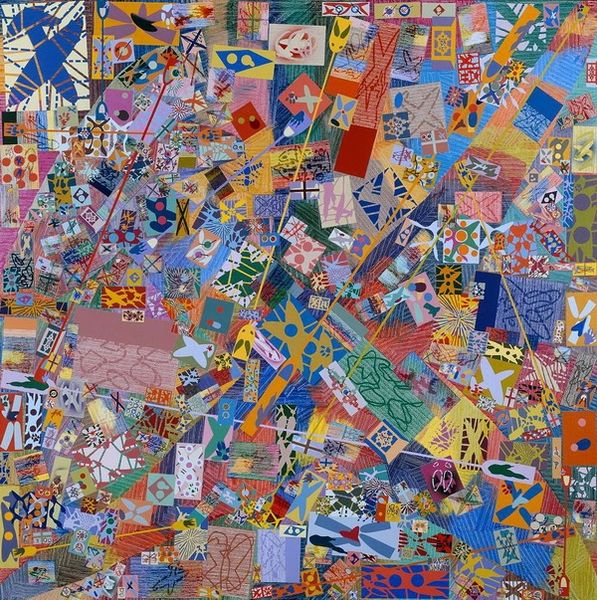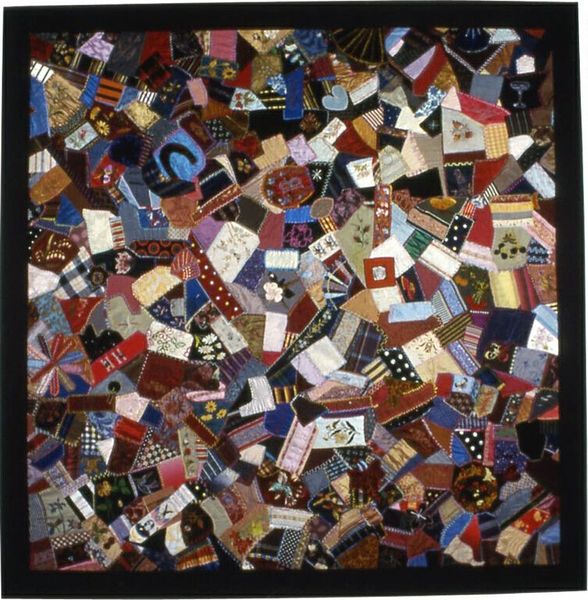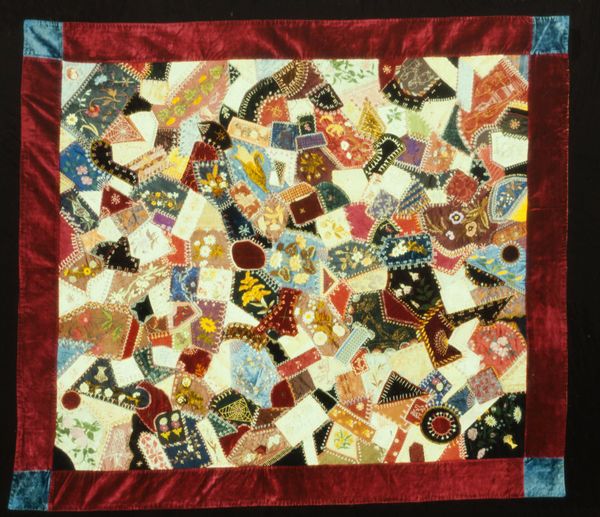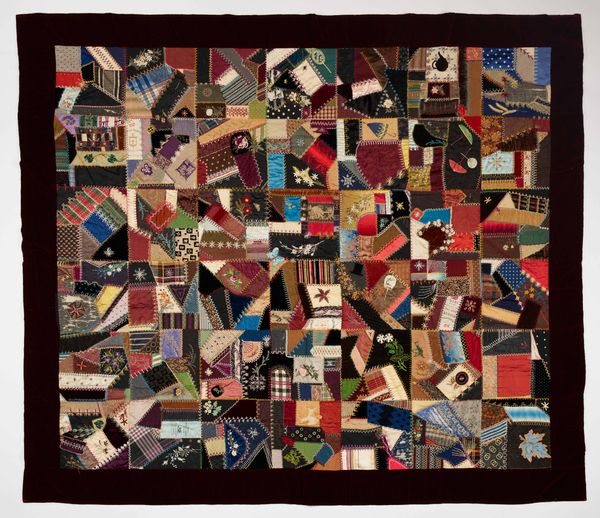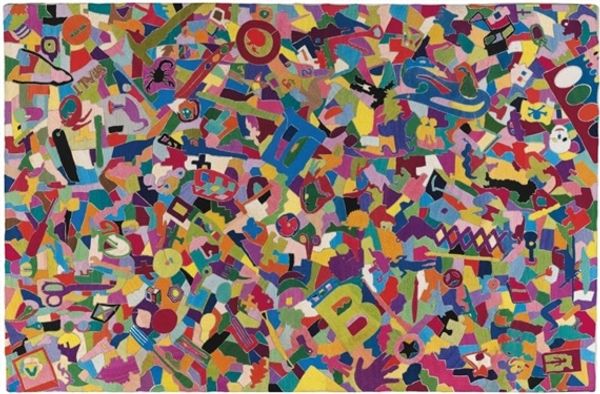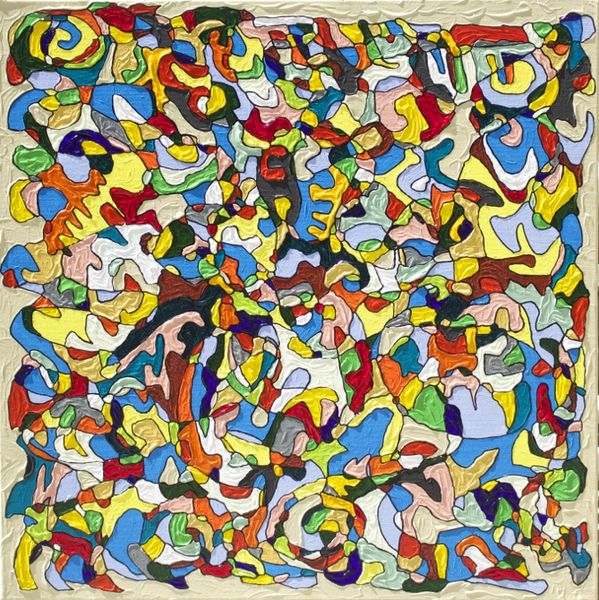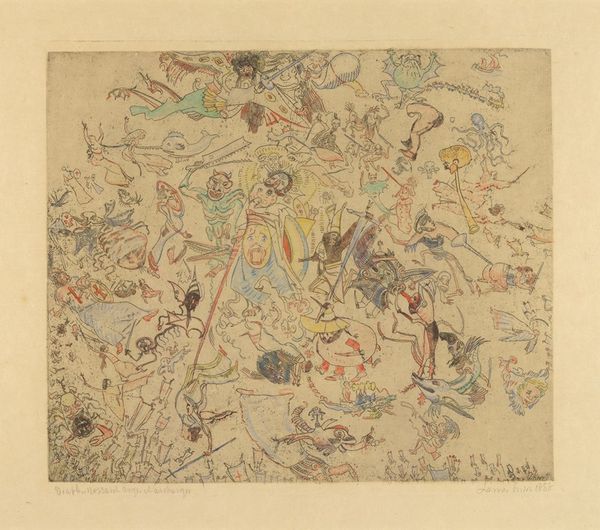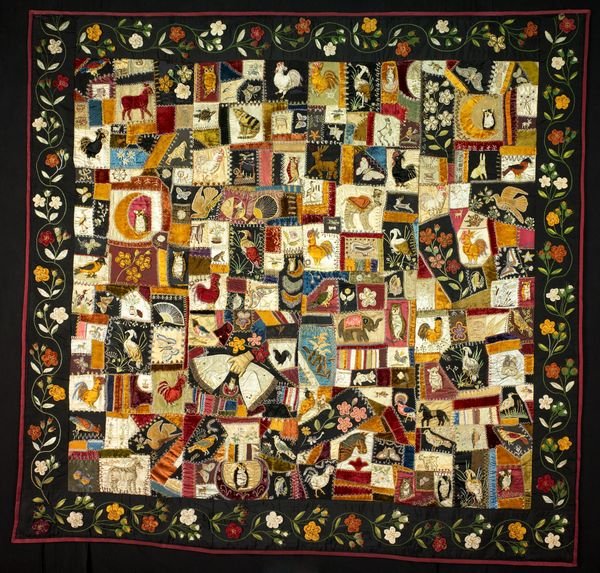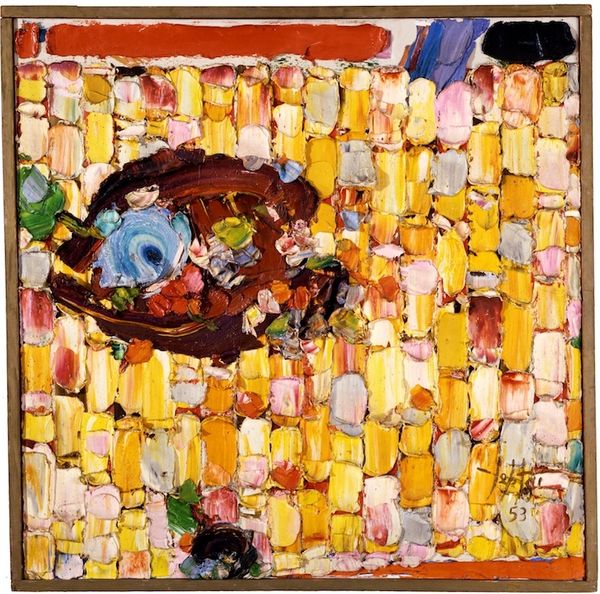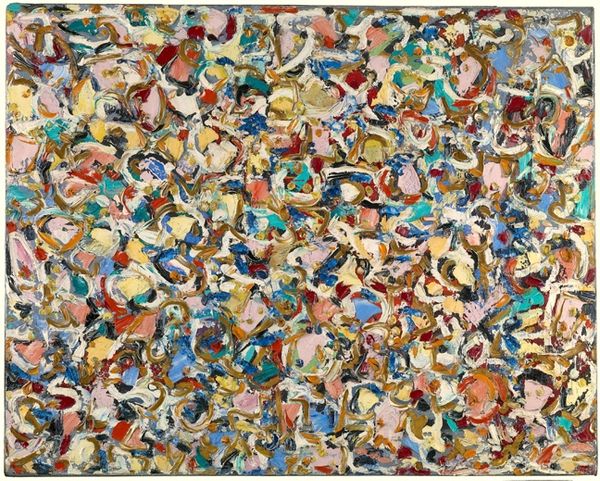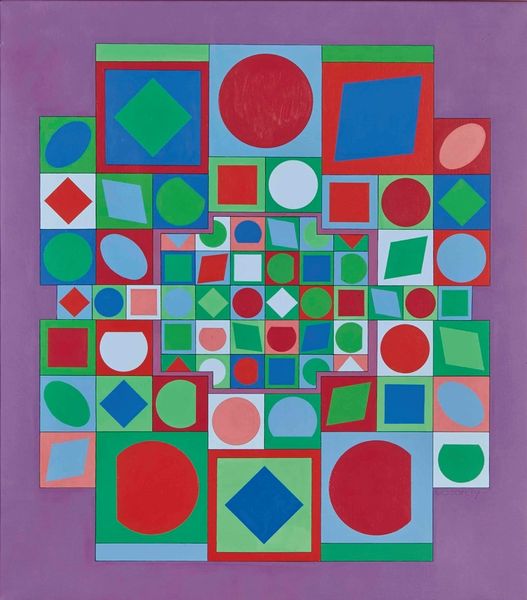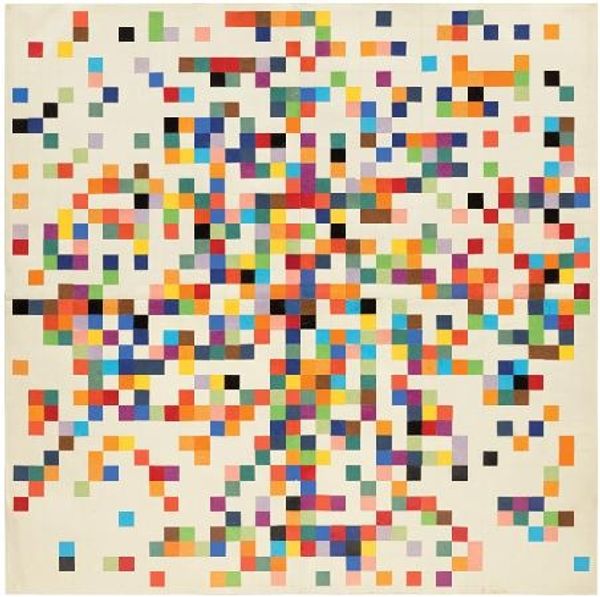
Dimensions: support: 1835 x 1835 mm
Copyright: © Bernard Cohen | CC-BY-NC-ND 4.0 DEED, Photo: Tate
Curator: Let's discuss Bernard Cohen's expansive piece, "Matter of Identity III - The Trace," currently held in the Tate Collections. The support measures 1835 by 1835 millimeters. Editor: My first impression is one of overwhelming visual activity! The sheer density of shapes and colors creates a sense of fractured narratives, almost like a deconstructed memory palace. Curator: The composition is indeed complex. Cohen employs a layered approach, building up marks and motifs that invite deep contemplation on form and pattern. Editor: I see themes of fragmentation that speak to the transient nature of identity. The trace, as the title suggests, hints at what remains after experiences shape us—suggesting an intersectional lens, as identity is never monolithic. Curator: A fitting interpretation. The artist’s focus remains on exploring the interplay of abstract elements within the picture plane, creating a self-referential visual language. Editor: Perhaps, but by examining the artwork through a lens of cultural theory, it resonates beyond formal play, sparking dialogue about how we construct and perceive ourselves in a changing world. Curator: I appreciate how our contrasting viewpoints offer such varied insights. Editor: Indeed, it’s the dialogue itself that illuminates new perspectives.
Comments
tate 6 months ago
⋮
http://www.tate.org.uk/art/artworks/cohen-matter-of-identity-iii-the-trace-t03284
Join the conversation
Join millions of artists and users on Artera today and experience the ultimate creative platform.
tate 6 months ago
⋮
This painting's six principal images are an aeroplane, a paw mark, a paddle, a meal table, an explosion and a window. From corner to corner Cohen painted an aeroplane in one set of colours which, while wet, he scraped in numerous directions. He painted the rest of the canvas in a contrasting set of scraped colours. Within the aeroplane's boundaries he then painted an image using the second set of colours, and repeated it (a different size, sometimes inverted, dismembered or as if projected) in the non-aeroplane space, but in the aeroplane colours. This process continued until all spaces were full. Colours were intended to clash as much as possible. The orientation of each image was determined by its having to rest on a scraped line. Here, as in many of Cohen's works, an unpredictable scatter of forms grows as the painting develops. Cohen sees this progression as akin to that of a meal. As a Jew, his experience of the Passover meal gave him a heightened sense, from an early age, that shared meals can have complex meanings. As he has observed, one Passover meal, the Last Supper, was eaten on 'the eve of Chaos'. Here, as in Sienese painting, smaller 'predella' panels amplify a picture's principal image. Cohen was also concerned with the notion of the traces left by the passage of anything across space, land or time. The marks here are literally traces of the delicate stencils, cut by him, through which they were painted. Paddles have no top or bottom; their irregular arrangement here accords with Cohen's decision that the painting may be hung any way up. Gallery label, September 2004
